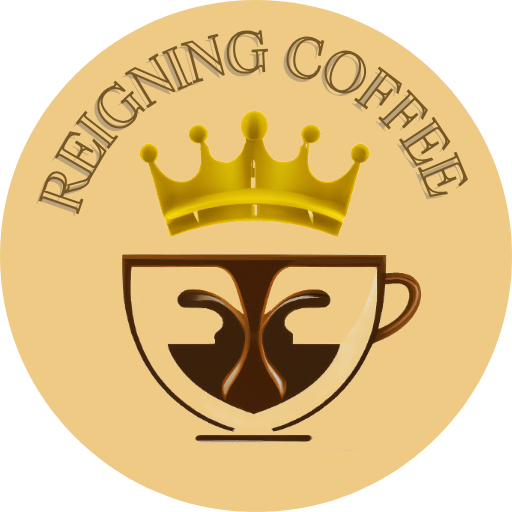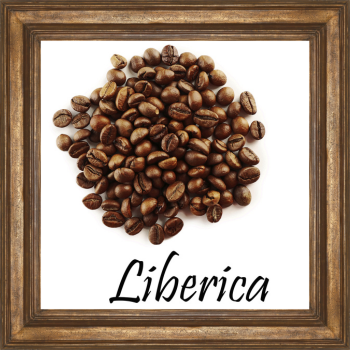If you purchase something from one of our links, we make a small commission. So in essence, you may have just got me a cup of coffee! Thank you! This will in no way have an impact on the price of the item...
I’m going to introduce you to one of the coffee world’s best-kept secrets: Liberica. This isn’t just about another coffee variant; it’s about a species that stands out from the crowd with its distinctive characteristics and intriguing story. When you think of coffee, the names that likely come to mind are Arabica and Robusta, but Liberica is a unique coffee species, separate from these more common counterparts.
In my opinion, the journey of Liberica beans has been nothing short of fascinating. Native to western and central Africa, it has managed to travel and root itself in places like Colombia, Venezuela, and Southeast Asia. Despite its enchanting journey, Liberica only accounts for less than 1.5% of the world’s coffee production, primarily cultivated in the Philippines, Malaysia, and Indonesia.
You’re going to find out about how Liberica has made a mark with its almond-shaped beans that harbor a distinctive aroma – think floral and fruity – and a full flavor that can only be described as slightly smoky. These qualities are just the tip of the iceberg when it comes to the special things that make Liberica truly one of a kind.
Don’t worry too much about not having heard of Liberica before; its rarity is precisely what makes it so special and worth discussing. Plus, the current efforts to conserve this at-risk beauty only add to its remarkable story. You might wonder why we aren’t overwhelmed with Liberica options at our local coffee shops – there’s a reason for that, and it’s tied to the challenges and charms that this coffee species presents.
Choose to embark on this caffeinated adventure, and you’ll discover not just a coffee, but a legacy. As we move to the next section, I’m here to help you delve into the unique traits of Liberica coffee beans that set them apart in both agriculture and the cup they fill.
The Unique Traits of Liberica Coffee Beans
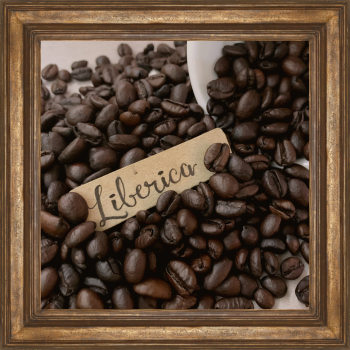
If you’re curious about what sets Liberica apart in the world of coffee, it’s not just where it’s grown or the rarity – it’s the beans themselves. Liberica beans diverge from the norm with their distinguishable almond shape that immediately catches the eye. This asymmetry is visible when you put them side by side with beans from the more ubiquitous Arabica and Robusta varieties.
Then there’s the aroma. Imagine walking through a lush orchard – that’s the kind of floral and fruity scent you’ll discover emanating from Liberica beans. When you brew a cup, these aromas fill the room, creating an unexpectedly welcoming experience different from your standard coffee.
And when it comes to flavor, Liberica doesn’t play by the same rules as its counterparts. You’re going to find out about a coffee that’s defined by a full, slightly smoky flavor. Notes of wood and a subtle hint of nuttiness complement an undercurrent of light fruity aspects. It’s a complex tapestry of flavors that challenge the palate in the most delightful way.
You might think that with such a profile, Liberica would be more common, but it remains a treasured secret among coffee connoisseurs. The coffee community agrees – the taste of Liberica is a rare adventure in every sip.
But watch out, these aren’t the kind of beans that are easily found at your local coffee shop. Due to its limited production, just learning about Liberica can feel like uncovering a hidden gem in the coffee world. And speaking of its rarity, let me guide you into the next section, where we’ll dive into why Liberica, despite its allure, is fighting against the risk of extinction.
Conservation Efforts and the Battle Against Extinction
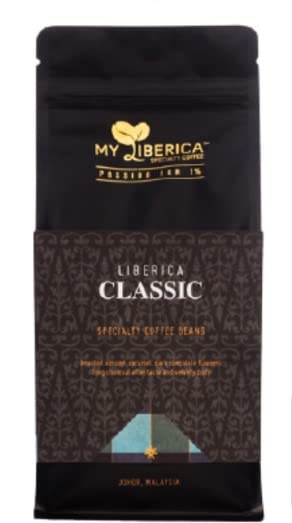
You might not know this, but Liberica is more than just a coffee species. It’s facing a very real threat of extinction. Now, that’s significant not just for coffee aficionados but for global biodiversity as a whole. When we talk conservation, it’s about preserving the rich tapestry of life that includes these unique coffee species.
The importance of biodiversity can’t be overstated. It ensures the stability of ecosystems and the survival of various species, including humans. Liberica, with its dwindling numbers, has conservationists scrambling to protect it. These efforts are crucial; we’re not merely saving a plant, but safeguarding a piece of our natural heritage.
The purity of Liberica varieties is under fire too. With many farms shifting their focus to hybrid coffees, bred for hardiness or flavor, the pure strains of Liberica are becoming a rarity. This intermixing poses a dilemma. While hybrids are resilient, they dilute the essence of what makes Liberica so special.
However, it’s not all doom and gloom. Initiatives to conserve Liberica are gaining momentum. Organizations and local farmers are working together to maintain the genetic diversity of this species by protecting its natural habitat and promoting its cultivation.
In the next part, we’ll delve into the world of Liberica cultivation – the challenges faced by the farmers nurturing this rarity and the rewards that keep them invested in its future.
The Agricultural Challenges and Rewards of Cultivating Liberica
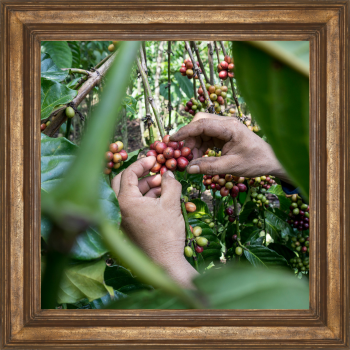
Growing Liberica coffee isn’t your typical farming venture. It’s a tall order, literally. Farmers face a unique set of challenges with Liberica trees, which reach greater heights than their Arabica or Robusta counterparts. This means harvesters often need ladders to pick the cherries, adding layers of complexity and labor to the process.
Despite these hurdles, cultivating Liberica coffee offers rewarding opportunities for farmers willing to take the path less traveled by the coffee industry. One of the striking features of Liberica is its resilience. Coffee leaf rust, a major concern for other coffee species, is less of a problem for Liberica, which has firmly stood its ground against the disease. Resilience has made Liberica a historical hero in Southeast Asia, helping it gain a foothold during the 19th century when the coffee industry was tormented by this leaf rust epidemic.
Your taste for Liberica coffee goes beyond just a personal preference. It’s a nod to the perseverance of the species and the farmers who nurture it. By choosing Liberica, you’re part of a movement that celebrates diversity in the coffee world and ensures these unconventional trees continue to flourish.
Supporting Liberica Coffee: An Investment in Biodiversity and Heritage
You might be wondering, why should I care about Liberica coffee? Well, it’s not just a matter of taste; it’s about preserving a piece of our natural heritage. Every cup of Liberica coffee supports the farmers dedicated to maintaining this rare species and contributes to biodiversity conservation efforts.
Now, remember the scarcity and transportation hurdles contribute to the premium price of Liberica. But when you choose Liberica, you’re actually voting with your dollar for a more diverse and sustainable coffee industry.
Plus, embracing Liberica coffee is a chance to explore its unique flavor profile that’s been cherished as part of coffee culture in places like the Philippines, Malaysia, and Indonesia. It’s a taste that connects you to the less-traveled paths of coffee enthusiasts around the world.
And let’s not forget, contributing to the preservation and propagation of Liberica means helping keep the coffee culture rich and varied for future generations. Just as we treasure arts and culture, preserving the various coffee species is akin to keeping the different genres of music or forms of art alive.
In my opinion, if you love coffee, supporting Liberica is an excellent way to ensure that this precious bean continues to thrive. It’s about more than enjoying a rare brew; it’s a commitment to protecting our planet’s biodiversity. So next time you’re hunting for a new coffee to try, consider Liberica and savor each sip knowing you’re part of a bigger picture.

Brandyn hails from Minnesota. His passions include, drawing portraits, Researching, Writing, and of course, COFFEE!!! When he’s not drinking coffee, he’s learning how to make his next cup even better. He writes down everything he learns and shares them on his website “ReigningCoffee.com”. If he’s not writing or researching, he’s probably drawing. His goal is to help you enjoy your coffee, even more than you already do.
